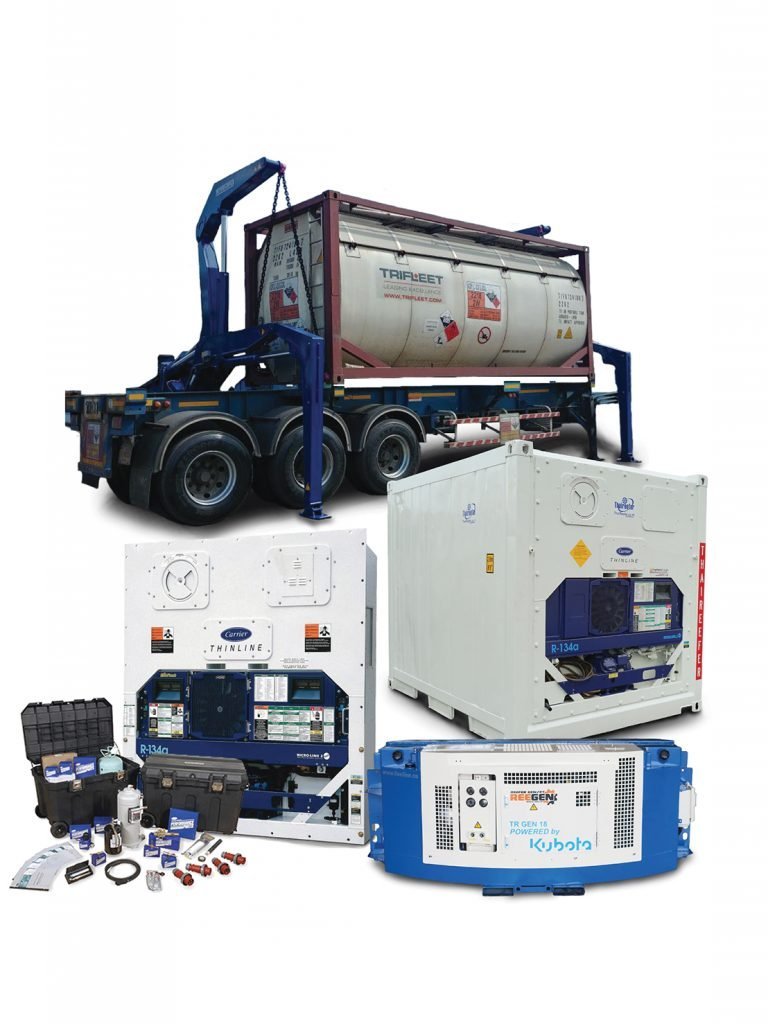ข้อมูลของตู้คอนเทนเนอร์แบบห้องเย็น
บริษัทผู้ผลิตหน้าเครื่องทำความเย็นสำหรับตู้คอนเทนเนอร์ และโมเดลของเครื่องทำความเย็น
Carrier
Thinline – Reciprocal type compressor
511 (ML2i) (Year 1997-2004) (Temp -20c)
541 (ML3) (From Year 2004) (Temp -25c)
Primeline – Scroll type compressor
561 (ML3) (From Year 2004) (Temp -25c)
Thermoking
Magnum (Temp -35c)
Magnum + (Temp -40c)
Daikin LXE (Temp -20c)
Starcool (Temp -25c)
Carrier Thinlines (ML2i & ML3)
Repairable Compressor
Good market for parts (OEM and Original)
Backward compatible parts – ML3 parts can be used with ML2i parts
สำหรับอะไหล่ตู้คอนเทนเนอร์แบบห้องเย็นแบรนด์ Carrier และบริการซ่อม ติดต่อ ไทยรีเฟอร์
Daikin LXE
Good service and parts network
Hot Gas defrost
สำหรับอะไหล่ตู้คอนเทนเนอร์แบบห้องเย็นแบรนด์ Daikin และบริการซ่อม ติดต่อ ไทยรีเฟอร์
Thermoking Magnum and Magnum Plus
Low temperature -35c / -40c (from r404a refrigerant)
Starcool
Lowest power consumer
Different compressors
Top left – Carrier 511(ML2i) / 541(ML3) (Reciprocal)
Top right – Daikin LXE (Scroll)
Bottom left – Starcool (Reciprocal)
Bottom right – Thermoking (Scroll)
Scroll vs Reciprocal Compressor
Carrier Thinline Compressors can be repaired relatively easy
USDA Sensors
Reefer Containers provide 3 additional sensor sockets for USDA sensors
Reefer Container have Bottom Airflow design
Refrigerant Transition to reduce environmental impact.
R-134a (GWP 1,430) -> R-513a (GWP 631)
R404a (GWP 3,922) -> R452a (GWP 2,141)
*GWP – Global Warming Potential
Fresh Air / Ventilation
Users should look at m2/h or CFM not % (because % may vary with manufacturers)
To remove CO2, Ethhylene (causes uncontrolled ripening, aging, off flavour and moulds
Carrier MicroLink ML2i / ML3 Alarm Types
2 types of alrms: Active Alarm (AA) and Inactive Alarm (IA)
20 series are critical alarm require immediate action
50 & 60 series alarm are non-critical
Carrier MicroLink ML2i / ML3 Alarm Types Pre-Trip Inspection (PTI)
Auto 1 (Short PTI) -> tests sensors and components functioning (takes about 30min)
Auto 2 (Long PTI) -> test reefer container performance (takes about 4 hours)
Reefer Container Purpose
To maintain the temperature of the product
It is not designed to reduce or increase the temperature of the product – “a Reefer is a hotel, not a Hospital !”
It relies on good air circulation within and around the load
Product Temperature
Product should always be cooled to the required temperature before being loaded
Product should be loaded from an air sealed refrigerated loading bay.
Pre-Cooling the Container
Precooling is pointless if proper loading bay is not provided (and can be worst due to condensation on the interior walls during loading)
Note that fresh product box has air holes while frozen product box does not have holes
Loading Procedure
PTI test the reefer container to be loaded and Pre-cool
Switch off the unit before opening the door
Load the product at the correct temperature
Close doors
Ensure correct setpoint
Startup unit
Inspecting container
Pre-Cooling the Container
Precooling is pointless if proper loading bay is not provided (and can be worst due to condensation on the interior walls during loading
Pallet Loading
Properly loaded pallets should allow air flow around and in between the boxes.
Allow 100mm gap from rear door
Improper loading
Excessive space between the load
Load placed in the rear of the container
Load placed in the front of the container
Climacteric & Non-climacteric fruits
Climacteric fruits still ‘breath’ after harvest
การขนส่งทุเรียน
To extend shelf life of Durian, it is best to chill Durian right after harvest.
หากต้องการข้อมูลเพิ่มเติมเกี่ยวกับตู้คอนเทนเนอร์แบบห้องเย็น และการขนส่งสินค้าแช่แข็ง ติดต่อเรา ไทยรีเฟอร์!



